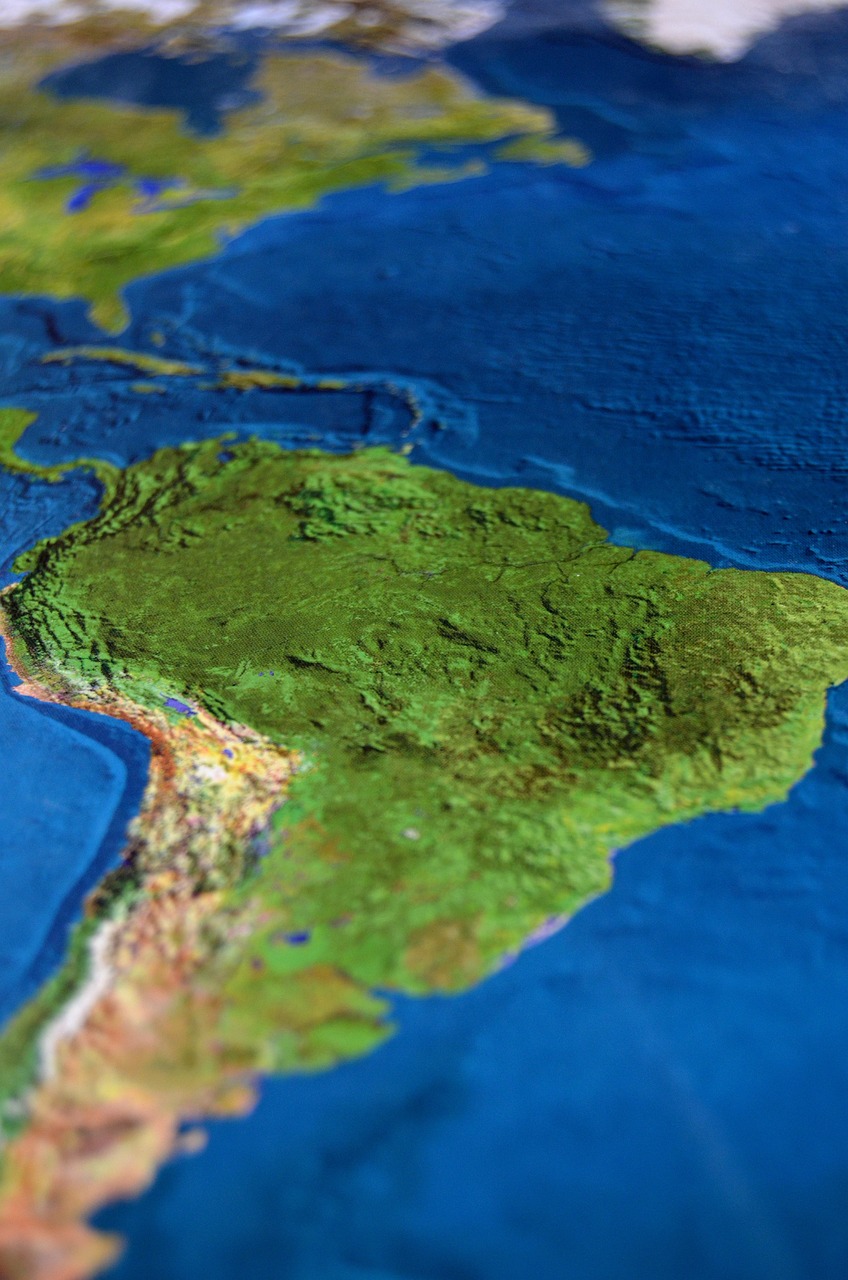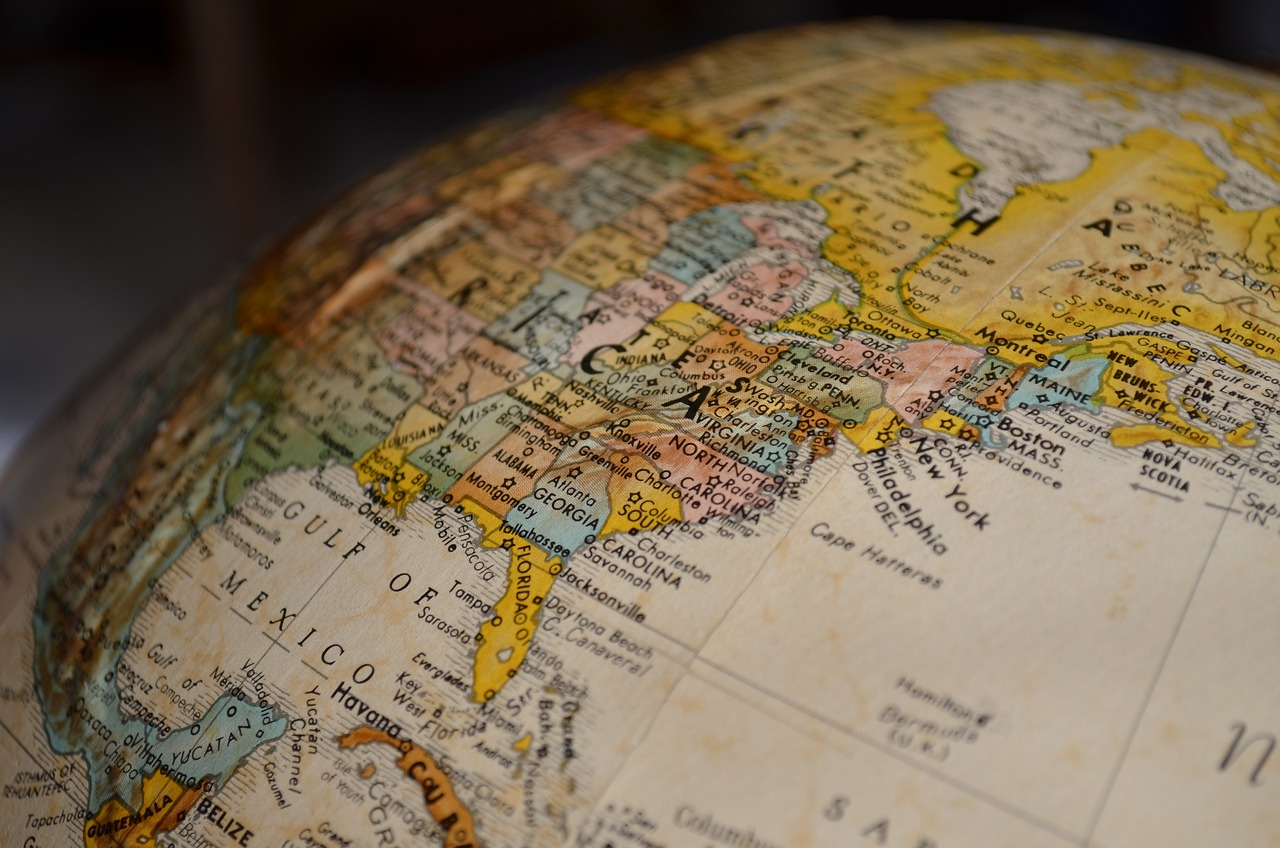South America is history brought to life. From ancient ruins hidden in misty mountains to grand colonial cities, this continent offers an unforgettable journey through time. Each country tells its own story, blending indigenous traditions with centuries of European influence, creating a cultural mosaic like no other.
In this guide, you’ll discover standout historical destinations from every country, paired with detailed itineraries to make your planning effortless. Whether it’s Peru’s majestic Machu Picchu or Colombia’s colorful Cartagena, these handpicked spots promise to enrich your travel experience with a deeper connection to the past. Get ready to explore, plan, and be inspired.
Argentina: Land of Passion and History
Argentina is a country that feels alive with history. Its streets pulse with stories—some etched in grand colonial architecture, others whispered through ancient natural wonders. From the cobblestone alleys of Buenos Aires to the misty spray of Iguazú Falls, every corner invites you to step into its past while enjoying its vibrant present. Let’s dive into three must-see historical gems that capture Argentina’s spirit.
Buenos Aires: The Birthplace of Tango
Few cities wear their history as effortlessly as Buenos Aires. It’s a place where the old-world charm of Europe meets Latin American flair. The city’s historical neighborhoods, like San Telmo and La Boca, are where it all began. Walking in San Telmo feels like uncovering a treasure chest, with its 19th-century buildings, buzzing antique markets, and tango dancers performing in squares. Meanwhile, in La Boca, bursts of color take over the streets, showcasing bold art and culture that feels as alive as the people.
When it comes to iconic landmarks, Buenos Aires has no shortage. Make your way to Casa Rosada, the pink-hued presidential palace that has watched over the Plaza de Mayo for over a century. Don’t forget to imagine Eva Perón addressing crowds from its balconies—it’s truly a moment frozen in time. For those who love the arts, Teatro Colón is unmissable. This opera house, lauded as one of the best in the world, stands as a testament to the city’s dedication to cultural preservation. Every chandelier, every marble column, every velvet seat tells its own story—a mix of opulence and history that could keep you gazing for hours.
Iguazú National Park
Located on the edge of Argentina and Brazil, Iguazú National Park is more than just a natural wonder—it’s a piece of living history. The indigenous Guarani people hold the land sacred, weaving their myths and traditions into the roaring waters of Iguazú Falls. These waterfalls, made up of 275 cascades, aren’t just breathtaking—they’ve stood witness to centuries of human interaction with nature.
Exploring Iguazú feels like stepping into a time capsule. You’re strolling trails once traversed by the Guarani, discovering a deep connection to the land that spans generations. Look beyond the falls, and you’ll find the surrounding jungle steeped in biodiversity—trees, plants, and animals that have been part of this story for thousands of years. If you’re someone who loves the harmony of history and nature, this park will leave you awestruck.
Córdoba’s Jesuit Block
Step into a slice of Argentina’s colonial past by visiting Córdoba’s Jesuit Block. It may lack the flamboyance of Buenos Aires, but its importance in shaping Argentina’s history can’t be overstated. This must-see UNESCO World Heritage Site is a glimpse into the 17th-century efforts of the Jesuits, who built an enduring legacy of education, religion, and architecture in the region.
The complex includes stunning buildings such as the Monserrat School, Noucentista-style chapels, and the National University of Córdoba, which still stands as the oldest university in the country. Each structure feels like it was designed to leave an impression—from the intricate carvings on church facades to the vast libraries that fueled some of Latin America’s brightest minds. The Jesuits envisioned a cultural hub, and Córdoba grew into exactly that—a place where past missionary work finds itself tangled up with modern intellect. It’s where history and academia walk hand in hand.
Brazil: A Fusion of Cultures and History
Brazil’s history is a tapestry woven with influences from Europe, Africa, and its indigenous roots. A visit here offers more than beaches and vibrant festivals—it’s a chance to connect with stories that shaped this sprawling country. From colonial towns to modern marvels steeped in significance, Brazil’s historical gems are as diverse as its culture. These must-see destinations will make you want to dive right into the heart of its past.
Salvador: Heart of Afro-Brazilian Culture
Salvador’s Pelourinho district is as colorful as its history. Think cobblestone streets flanked by pastel-hued houses that look like they’ve jumped straight out of a postcard. But behind the beauty lies a past that shaped much of Brazil. This was once a central hub of the Atlantic slave trade, making Salvador one of the most historically significant cities in the country.
Today, Pelourinho (“the whipping post”) is a UNESCO World Heritage Site, a place where colonial architecture meets Afro-Brazilian rhythms. You’ll find 17th-century churches like Igreja de São Francisco, richly decorated in gold leaf, standing as powerful reminders of the Portuguese influence. The area feels alive with culture—from capoeira performances in the square to the beats of samba pouring from every corner café. Walking these streets isn’t just sightseeing; it’s stepping into Brazil’s living history.
For a deeper connection, visit Museu Afro-Brasileiro, which offers an unflinching look at the African heritage that runs through Salvador’s veins. Whether you’re viewing sacred Yoruba artifacts or tasting acarajé (a savory bean fritter tied to traditions), you’ll leave with a better understanding of how Africa shaped the soul of Brazil.
Ouro Preto: A Colonial Gem
Nestled in the rolling hills of Minas Gerais, Ouro Preto glitters with echoes of Brazil’s gold rush. “Black Gold,” as it was once called, turned this town into an economic powerhouse during the 18th century. Today, it’s a colonial masterpiece preserved in time, earning its well-deserved designation as a UNESCO World Heritage Site.
One standout feature? Its baroque churches, dripping with ornate carvings and intricate details crafted by legendary sculptors like Aleijadinho. Make sure to visit Igreja de São Francisco de Assis; it’s a masterpiece that feels like walking into an artist’s mind. The splendor of these churches reflects the vast wealth—but also the inequalities—that defined Brazil’s colonial past.
Walking through the town’s steep streets is like taking a trip back into a European village. The colonial-era houses, with their red-tile roofs and wooden balconies, line narrow alleyways that feel untouched by time. It’s also worth touring the many museums showcasing artifacts from the gold rush era, including Museu de Inconfidência, which honors Brazil’s early independence movement. Ouro Preto is a destination where you can walk through history, step by step.
Rio de Janeiro: Beyond the Beaches
Rio de Janeiro may be world-famous for its beaches and Carnival, but this city is also a treasure chest of historical landmarks. Take the Imperial Palace (Paço Imperial), where Brazilian emperors once walked. Located in Praça XV, this colonial building now serves as a cultural center, packed with art and exhibitions that transport you to the 1800s when Brazil’s monarchy ruled.
Another must-see is the Santa Teresa neighborhood, perched on a hill above the city. This bohemian enclave oozes old-world charm, with colonial mansions turned into artist studios and guesthouses. The streets, connected by the iconic Escadaria Selarón, offer both history and vibrant art. It’s where Rio slows down, and the past feels more palpable.
Of course, no visit to Rio is complete without gazing up at Christ the Redeemer. But behind the massive statue lies a story of unity. Built in the 1930s, it was a symbol meant to bring together a nation as diverse as it is vast. Standing at the peak of Corcovado Mountain, it’s hard not to feel awe—even if you’re seeing it for the hundredth time. Beyond the breathtaking views, the monument’s creation reflects Brazil’s can-do spirit and desire for connection.
These three historic landmarks show a Rio de Janeiro that’s more layered than its infamous coastline. They bring the city’s past to life in ways that might even outshine its beaches.
Chile: Where History Meets Stunning Landscapes
Chile isn’t just a country; it’s a storybook written across mountains, deserts, and coastlines. With its long, skinny stretch of land hugging the western edge of South America, Chile offers a perfect union of natural beauty and deep historical roots. From the bustling streets of Santiago to the mysteries tucked away on Easter Island, this country welcomes you to dive into its past while marveling at its breathtaking terrain.
Santiago: A Capital of Contrasts
Santiago is a city where the past and present coexist effortlessly. Its streets are alive with history, yet vibrant with modern energy, creating an atmosphere that feels both timeless and dynamic.
Start your exploration at Plaza de Armas, the historic heart of Santiago. This square isn’t just a meeting point; it’s a living museum. Lined with colonial landmarks, like the Metropolitan Cathedral, it offers a glimpse into Chile’s storied evolution. Sit under its shade, watch locals play chess, and snap pictures of the classic architecture around you.
A short walk away, La Moneda Palace stands with quiet authority. Once the royal mint, it’s now the presidential office and one of Chile’s most iconic buildings. Catch the changing of the guard ceremony for a moment steeped in tradition. While the palace is impressive from the outside, a guided tour allows you to step into its more intimate history.
For something more sobering yet incredibly powerful, visit the Museum of Memory and Human Rights. Dedicated to those who suffered during Pinochet’s dictatorship, this museum reminds us of the importance of learning from the past. Exhibits here are interactive and emotionally stirring, perfect for those who value unfiltered accounts of history. This stop will stick with you long after you’ve left Santiago.
Valparaíso: The Jewel of the Pacific
Chile’s artistic soul isn’t hidden in a gallery—it spills out into the streets of Valparaíso. Once a significant port, this seaside city is now a labyrinth of colorful homes, street art, and steep hills begging to be explored.
Start by taking one of the iconic funiculars, or incline elevators, which are more than just practical—they’re historical artifacts themselves. These mechanical wonders have been carrying locals up Valparaíso’s steep hills for over a century. Riding one isn’t just transportation; it’s an essential part of the city’s character.
Valparaíso’s neighborhoods are like a painter’s palette. Wander through Cerro Alegre and Cerro Concepción, where brightly painted buildings ooze charm and artistic flair. Murals by world-famous and local artists cover walls, creating an open-air museum that feels alive with creativity. Hidden cafes, boutique shops, and small galleries make these hills perfect for exploring at your own pace.
But there’s more here than art—you’ll also discover its maritime roots. Visit Museo Marítimo Nacional to better understand Valparaíso’s importance as a sailing hub. This city tells the story of adventurers, merchants, and sailors who passed through its harbors, leaving their mark on Chilean history.
Easter Island: Rapa Nui Heritage
If there’s one place that feels like stepping into another world, it’s Easter Island. Known locally as Rapa Nui, this remote Pacific island is a treasure trove of cultural and historical intrigue, set against a backdrop of volcanic beauty.
The island’s most iconic feature? The towering Moai statues—over 900 of them, scattered across the island. These stone giants, carved by the Rapa Nui people more than 500 years ago, stand as timeless sentinels to a past we’re still unraveling. Visit Rano Raraku, the quarry where many of the statues were born, to see half-finished Moai, as if the sculptors just stepped away.
Historians still debate the purpose of these statues, but they agree that they represent ancestors watching over the land and its people. Standing in their shadow, you’ll feel the quiet power of this sacred heritage.
To learn more about the people behind the Moai, stop by the Father Sebastian Englert Anthropological Museum, which houses tools, artifacts, and insights into the island’s Polynesian history. Rapa Nui culture isn’t just about the past—it’s alive today in the songs, dances, and traditions of the locals who call this place home.
While you’re there, don’t miss Ahu Tongariki, the largest ceremonial platform on the island. Its 15 restored Moai offer a panoramic view of the ocean, reminding visitors just how far away this place is—geographically and culturally—from the rest of the world.
Peru: The Cradle of Ancient Civilizations
Peru is more than a country; it’s a living museum of human history. From its towering Andes to its coastal plains, it’s been the stage for some of the most fascinating stories ever told. The Inca Empire, one of the greatest civilizations of all time, left its mark here, blending seamlessly with later Spanish influences. Every corner reveals a piece of the past, making Peru a dream destination for history lovers. Ready to explore? Let’s jump into the heart of Peru’s most iconic historical treasures.
Machu Picchu: The Lost City of the Incas
Machu Picchu is a name that sparks instant wanderlust. Perched on a mountain ridge 7,970 feet above sea level, this breathtaking site is an Inca masterpiece, built in the 15th century and mysteriously abandoned not long after. With its polished stone structures and terraces, it’s no wonder it’s named one of the New Seven Wonders of the World.
Getting there isn’t just a trip—it’s part of the adventure. You can take the train from Cusco, a scenic ride that winds its way through the Sacred Valley. Feeling more daring? The famous Inca Trail offers a 4-day trek with views you’ll never forget. Just be sure to book early—permits are limited and sell out fast.
Once you’re inside, prepare to be awed. The Temple of the Sun, Intihuatana Stone, and terraces are architectural marvels that showcase the Incas’ genius. Here are a few tips:
- Arrive early for fewer crowds and an unbeatable sunrise.
- Bring water, sunscreen, and sturdy shoes—this isn’t the place for flip-flops.
- Consider hiring a guide. The stories behind each stone deepen your understanding of the site’s purpose and significance.
Machu Picchu is more than a postcard moment—it’s an experience that lingers with you long after you leave.
Cusco: The Ancient Inca Capital
Cusco is the kind of city where history trails you with every step. Once the capital of the Inca Empire, its cobbled streets now showcase a harmonious mix of Inca ruins and Spanish colonial architecture. Wander around, and you’ll feel like you’ve stepped into a mash-up of two distinct eras.
You can’t miss Sacsayhuamán, a fortress made of enormous stones so precisely cut, even a piece of paper can’t slide between them. It’s believed to have been a ceremonial center and a military stronghold. For more colonial charm, visit the Cathedral of Cusco on the Plaza de Armas. Its intricate altars, carved out of wood and adorned with gold, tell centuries of stories.
Let’s not forget Qorikancha, once the Temple of the Sun, where you’ll find Inca stone foundations topped with colonial convents—a perfect visual summary of Cusco’s layered history. For food lovers, be sure to try chicha morada (a refreshing purple corn drink) and roasted guinea pig, a traditional Andean delicacy that locals affectionately call cuy.
Here’s a pro tip: Don’t rush Cusco. Spend at least two days here, and take it slow—you’ll need time to adjust to the city’s high altitude.
Lima: A City of Kings
Lima, Peru’s capital, might surprise you. While it’s known for its thriving food scene, it’s also a hub of history. Nicknamed the City of Kings, Lima offers a mix of colonial grandeur and pre-Columbian treasures waiting to be discovered.
Start your journey in the heart of the city at Plaza de Armas (Plaza Mayor). This UNESCO World Heritage Site is surrounded by stunning landmarks like the Government Palace and the Lima Cathedral, where Francisco Pizarro, the Spanish conquistador, is buried. The square buzzes with life, and it’s the perfect spot to soak up the city’s energy.
For a change of pace, stroll through Barranco, Lima’s bohemian district. This artsy area radiates charm with its colorful murals, quaint cafes, and the famous Puente de los Suspiros (Bridge of Sighs). It feels like an escape from the city’s hustle, offering a peek into a more relaxed, creative side of Lima.
Don’t miss Miraflores, a coastal neighborhood blending history with luxury. While it’s known for its cliffs overlooking the Pacific Ocean, it’s also home to the Huaca Pucllana, an ancient adobe pyramid from 1,500 years ago. Walking amidst these ruins feels surreal, especially when they’re lit up at night.
Lima’s charm lies in its contrasts—a city where rich history and modernity collide to create something truly unique.
Colombia: A Tale of Revival and Rich History
Colombia’s history is layered with stories of ancient civilizations, colonial conquests, and modern resilience. Its cultural treasures and striking landmarks make it a must-visit for history enthusiasts. Whether you’re wandering through historical streets or trekking to archaeological marvels, Colombia is a living anthology of its past.
Cartagena: Walled City of the Caribbean
Cartagena is Colombia’s jewel on the Caribbean coast, and its history is as vibrant as its colorful streets. Founded in 1533, this city became a Spanish stronghold, thwarting attacks from pirates and rival empires. To protect its riches, the Spanish built Las Murallas, an impressive system of walls and fortifications that still embrace the old town. Strolling along these battlements, you’ll feel the weight of history beneath your feet, with stunning views of the sea at every turn.
The heart of Cartagena, its walled city, has earned UNESCO World Heritage status for good reason. Inside these walls, every street feels like a step back in time. You’ll encounter centuries-old churches, plazas buzzing with life, and colonial homes with carved balconies draped in bougainvillea. Highlights include the Castillo San Felipe de Barajas, a fortress that looms over the city. Its maze-like tunnels and towering walls were designed to thwart invaders, and today, it’s a fascinating glimpse into colonial military strategy.
Cartagena also showcases a rich cultural fusion. Visit Plaza de los Coches or Plaza Santo Domingo, where colonial architecture meets Afro-Caribbean influences. The city comes alive at night with lively music and salsa dancing swirling around its cobblestone squares. Cartagena isn’t just history—it’s an experience, and it stays with you.
Bogotá: The Capital’s Historical Heartbeat
Bogotá, Colombia’s sprawling capital, captures the nation’s soul through its history, culture, and art. The La Candelaria district is where it all begins. This is old Bogotá—a neighborhood dressed in cobblestone streets, colonial-era mansions, and striking murals that tell stories as vivid as the city itself.
Start at Plaza Bolívar, the heartbeat of Bogotá, surrounded by architectural gems like the Primatial Cathedral and the Capitolio Nacional. Not far from here, you’ll find the Gold Museum (Museo del Oro). This glowing repository of pre-Columbian artifacts is one of the most significant collections in the world. Relics on display—crafted in dazzling gold—offer insight into indigenous cultures that thrived long before the Spanish arrived.
For breathtaking views paired with spiritual significance, head to Monserrate, a mountain that overlooks the city. Visitors can reach the summit via cable car, train, or a challenging hike. The hillside is home to a whitewashed sanctuary, which has been a pilgrimage site for centuries. Standing at the top, surrounded by lush greenery and clouds, Bogotá’s urban sprawl unfolds below in a striking contrast to the mountain’s serenity.
Ciudad Perdida: The Lost City Trek
Dubbed Colombia’s alternative to Machu Picchu, Ciudad Perdida (The Lost City) is a masterpiece hidden deep within the Sierra Nevada mountains. Built by the Tayrona civilization over 1,000 years ago, this ancient city outdates Machu Picchu by centuries. While it was abandoned during Spanish colonization, its overgrown ruins were rediscovered in the 1970s.
Reaching Ciudad Perdida requires commitment. The four- to six-day trek cuts through dense jungles, rivers, and steep trails. It’s not easy—but it’s unforgettable. Along with the breathtaking vistas and wildlife along the way, hikers encounter descendants of the Tayrona people, like the Kogi, who continue to preserve their rich cultural traditions. By trekking these trails, you’ll be following in the footsteps of Colombia’s indigenous ancestors.
Once you arrive, the reward is immense. The moment you climb the 1,200 stone steps that lead to Ciudad Perdida feels like stepping into a sacred space. As you explore the terraces, plazas, and circular stone paths, the scale of ingenuity becomes clear. The Tayrona built this city without wheels or metal tools, which makes its precision and layout all the more impressive. Ciudad Perdida isn’t just a trek—it’s a journey into Colombia’s ancient heart.
Colombia’s historical destinations make it a dynamic blend of the old and the new. From Caribbean forts to mountain mysteries, its rich history refuses to be forgotten.
Ecuador: Land of Diversity and History
Ecuador is where history and horizons meet, creating a country that feels like several worlds in one. Think breathtaking colonial cities, ancient ruins with layers of mystery, and landscapes so unique they inspired scientific revolutions. For travelers, it offers a slice of the past with a bold dash of nature’s best work. Here’s where to go if you want to experience Ecuador’s history firsthand.
Quito: A UNESCO Heritage Capital
Quito might just be history’s love letter written in bricks and stone. Perched high in the Andes, its well-preserved colonial center earned the title of UNESCO World Heritage Site for good reason. Walk the Calle de la Ronda, and you’ll feel like you’re exploring a living museum. Winding cobblestone streets lead you past Spanish-era houses painted in vibrant hues, their iron balconies spilling over with flowers.
One highlight? The Basilica of the National Vow. Its neo-Gothic design rivals Europe’s grandest cathedrals, but look closer, and you’ll notice something truly Ecuadorian: gargoyles shaped like iguanas, turtles, and other iconic wildlife. Ascend its towers if you’re feeling daring—the views of Quito from above are nothing short of cinematic.
Just a short drive away, Panecillo Hill watches over the city. At its summit stands La Virgen del Panecillo, a massive winged statue visible from almost anywhere in Quito. It’s not just a viewpoint; this hill has been a spiritual site since pre-Columbian times. Imagine standing here at sunset as the city lights flicker on. It’s less a scene, more a postcard brought to life.
Cuenca: Ancient Charm Abound
If Quito is Ecuador’s bold headline, Cuenca is its gentle poetry. This colonial gem invites you to slow down. Walking here feels like stepping into another era, where red-tile roofs and ornate ironwork tell stories of centuries past. The Old Town, with its mix of baroque churches and republican architecture, is so charming it might tempt your camera’s memory card into overdrive.
Make time to explore the Cathedral of the Immaculate Conception, affectionately called the New Cathedral. Its iconic blue domes hover above Plaza Calderón like an eternal sky—a backdrop for Cuenca’s laid-back yet lively vibe. Explore nearby Museo Pumapungo, and you’ll dive deeper into the region’s roots. You’ll find artifacts showcasing the traditions of the Cañari and Inca civilizations, who once made this area their home.
Even more striking is the proximity of the Ingapirca ruins, located about 90 minutes from Cuenca. As Ecuador’s largest Inca archaeological site, it’s often compared to Machu Picchu—not for its grandeur but for its ingenuity. It served as a temple and administrative hub, and the Temple of the Sun, with its precisely cut stones, highlights the mastery of Inca craftsmanship. If you love blending exploration with storytelling, Cuenca serves both on a silver platter.
Galápagos Islands: Evolutionary History
The Galápagos Islands aren’t just a paradise—they’re where science itself took a giant leap forward. This volcanic archipelago’s unique biodiversity caught the eye of Charles Darwin himself in the mid-19th century. His observations here formed the foundation of his theory of evolution by natural selection. Yes, these islands helped change the world’s understanding of life—how’s that for historical significance?
Walking through areas like Puerto Ayora or stepping onto famed islands like San Cristóbal or Isabela, you’ll feel history underfoot, quite literally. Efforts to conserve the islands’ fragile ecosystems took root decades ago and continue today. Ecuador strictly regulates who and what goes in or out, ensuring their spectacular flora and fauna remain as surreal as Darwin saw them.
Prepare to be humbled by wildlife that’s fearless and curious. Watch blue-footed boobies dance their way into mates’ hearts or giant tortoises that seem plucked from a prehistoric dream. Venture underwater, and you’ll find marine sanctuaries teeming with life, from playful sea lions to schools of brightly colored fish that look like they’re auditioning for an aquarium ad.
The Galápagos offer something more than beauty. They’re a living classroom and a symbol of what happens when places are treated with respect. To visit is to witness a story still being written—just don’t be surprised if it changes you as much as it did Darwin.
South America isn’t just a destination—it’s a passport to the past, full of cultural depth and historical treasures. From Argentina’s colonial streets to Peru’s ancient ruins, each country offers its own unique slice of history, waiting to inspire. Whether you’re a lover of art, architecture, or legends carved in stone, these landmarks remind us of the stories that shaped the world.
Take your time. Plan thoughtfully. Let these destinations teach you something new. Which country will you explore first? Your journey starts now—pack curiosity and adventure, and let South America leave an unforgettable mark on you.
Discover more from Beautiful over 40ish
Subscribe to get the latest posts sent to your email.




